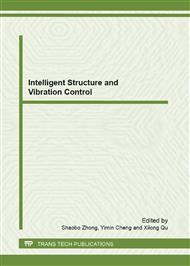[1]
J. Han, M. Kamber. Data Mining: concepts and technique, 2nd edition.High Education Press, Morgan Kaufman Publishers, 2006.
Google Scholar
[2]
Y.Y. Yao, Granular computing for data mining, Proceedings of SPIE Conference on Data Mining, Intrusion Detection, Information Assurance, and Data Networks Security, Dasarathy, B.V. (2006), pp.1-12.
DOI: 10.1117/12.669023
Google Scholar
[3]
Y.Y. Yao, On Modeling data mining with granular computing, Proceedings of the 25th Annual International Computer Software and Applications Conference (2001), pp.638-643.
DOI: 10.1109/cmpsac.2001.960680
Google Scholar
[4]
J.Q. Xu, X. Peng, W.Y. Zhao. Program Clustering for Comprehension based on Fuzzy Formal Concept Analysis [J]. Journal of Computer Research and Development, 2009,46 (9): 1556-1566.
Google Scholar
[5]
Y.Y. Yao, Potential applications of granular computing in knowledge discovery and data mining, in: Proceedings of World Multi Conference on Systemics, Cybernetics and Informations, 1999, 573–580.
Google Scholar
[6]
R. BelohlaVek. Similarity relations in concept lattices. J. Logic Comput, 2000, 10(6): 823–845.
DOI: 10.1093/logcom/10.6.823
Google Scholar
[7]
G.Y. Wang, Q.H. Zhang and J. Hu.An overview of granular computing [J] .CAAI Transactions on Intelligent Systems, 2007, 2(6) :6-26.
Google Scholar
[8]
Z.J. Wang, D.C. Zhan. A component retrieval method based on feature matching. International Journal of Information Technology, 2006, 2 (8): 60-72.
Google Scholar
[9]
G. Widmer, M. Kubat. Learning in the Presence of Concept Drift and Hidden Contexts. Machine Learning, 1996, 23(1): 69-101.
DOI: 10.1007/bf00116900
Google Scholar
[10]
Xiao-Dong Zhu, Zhi-Qiu Huang. Conceptual modeling rules extracting for data streams. Knowledge-Based Systems, 2008, 21: 934: 940.
DOI: 10.1016/j.knosys.2008.04.003
Google Scholar


